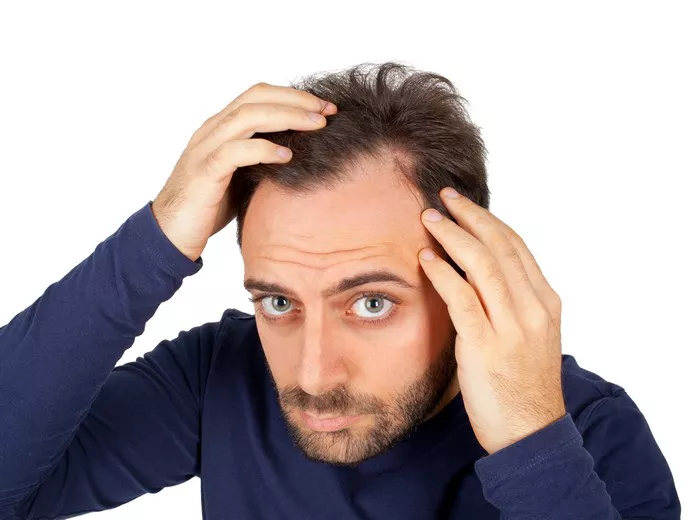As we age, many individuals experience changes in their hair, and for some, this may include an increased risk of hair loss. While it’s natural for hair to thin with age, there are proactive steps you can take to prevent excessive hair loss after the age of 40. In this article, we will explore effective strategies and lifestyle changes to help you maintain a healthy and vibrant mane as you navigate through your forties and beyond.
1. Understand the Aging Process
Before delving into prevention strategies, it’s crucial to understand the aging process and its impact on hair. With age, hair follicles gradually shrink, leading to thinner and shorter hair strands. Additionally, hormonal changes, particularly in menopause for women and andropause for men, can contribute to hair loss. Knowing the factors at play will help you make informed decisions about your hair care routine.
2. Adopt a Nutrient-Rich Diet
A well-balanced and nutrient-rich diet is foundational to overall health, and it also plays a significant role in the health of your hair. Ensure that your diet includes a variety of vitamins and minerals essential for hair growth, such as biotin, iron, zinc, and vitamin E. Incorporate foods like leafy greens, lean proteins, nuts, and seeds into your meals to support your hair’s vitality.
3. Stay Hydrated
Proper hydration is essential for overall health and can impact the condition of your hair. Dehydration can make your hair more prone to dryness and breakage. Aim to drink an adequate amount of water daily to keep your body and hair well-hydrated. Additionally, consider incorporating hydrating foods, such as water-rich fruits and vegetables, into your diet.
4. Choose Gentle Hair Care Products
As you age, your hair may become more delicate, and using harsh hair care products can contribute to breakage and hair loss. Opt for gentle shampoos and conditioners that are sulfate-free and specifically formulated for your hair type. Look for products that promote hydration and avoid those with harsh chemicals that can strip the natural oils from your hair.
5. Limit Heat Styling
Excessive use of heat styling tools, such as flat irons and curling wands, can damage the hair shaft and contribute to hair loss. Limit the use of these tools, and when you do use them, apply a heat protectant spray to minimize damage. Embrace your hair’s natural texture and consider low-heat styling options to reduce the risk of breakage.
6. Manage Stress Effectively
Chronic stress can have a significant impact on your overall health, including the health of your hair. High-stress levels can contribute to hair shedding and thinning. Incorporate stress management techniques into your routine, such as meditation, yoga, or deep breathing exercises. Prioritize self-care to promote both mental and physical well-being.
7. Regular Exercise
Engaging in regular physical activity has numerous health benefits, including improved circulation, which is essential for the health of your hair follicles. Aim for a combination of cardiovascular exercises and strength training to promote overall health and support optimal hair growth. Consult with your healthcare provider before starting any new exercise regimen.
8. Consider Supplements
In some cases, adding supplements to your daily routine may help support hair health. Biotin supplements, in particular, are often recommended for their potential to strengthen hair and nails. However, it’s essential to consult with a healthcare professional before incorporating any supplements into your routine, as individual needs vary.
9. Regular Scalp Massage
Scalp massage is a simple yet effective technique to stimulate blood flow to the hair follicles. Use your fingertips to gently massage your scalp in circular motions for a few minutes each day. This can help improve circulation and promote a healthy environment for hair growth.
10. Seek Professional Advice
If you notice significant changes in your hair, such as increased shedding or thinning, it’s advisable to seek professional advice. A dermatologist or a trichologist can assess your hair and scalp health, identify any underlying issues, and recommend appropriate treatments or interventions.
11. Be Gentle with Wet Hair
Wet hair is more susceptible to breakage, so it’s essential to handle it with care. Use a wide-tooth comb to detangle wet hair, starting from the ends and working your way up to the roots. Avoid vigorous towel-drying, as this can cause friction and lead to breakage.
12. Avoid Tight Hairstyles
Hairstyles that pull tightly on the hair, such as tight ponytails or braids, can contribute to traction alopecia, a form of hair loss caused by tension on the hair. Opt for looser hairstyles that minimize stress on the hair shaft and follicles.
See Also: Can Trauma Cause Hair Loss: Things You Need To Know
Conclusion
While hair changes are a natural part of the aging process, proactive measures can significantly impact the health and vitality of your hair after the age of 40. By adopting a nutrient-rich diet, staying hydrated, choosing gentle hair care products, limiting heat styling, managing stress, engaging in regular exercise, considering supplements, incorporating scalp massages, seeking professional advice when needed, and being mindful of how you handle wet hair, you can take control of your hair health and embrace your forties with confidence. Remember, a holistic approach to health and well-being extends to your hair, ensuring it remains a beautiful and vibrant part of your overall appearance.


